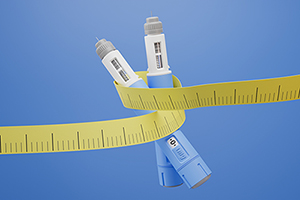



| By Dr. Ronald Hoffman
Food allergy is a hot topic in health care. Some doctors only believe in immediate or anaphylaxis reactions, while others believe in the addition of delayed food allergies. The text Clinical Allergy and Immunology: Food Hypersensitivity and Adverse Reactions, A Practical Guide For Diagnosis and Management sheds light on the diverse subject of food allergy and can be viewed as a bridge between the two schools of thought. This professional text assists the practitioner with regard to identification, treatment and various functions of food allergy and intolerance.
While there most likely will continue to be confusion among practitioners with regard to the diagnosis of food allergy, this clinical text offers such a wide variety of research that health care providers are treated to a ground up approach to this vast science. The text is divided into five parts. Parts I and II are considered the basic science section and review the allergic and immunologic basis for food allergy. This can be an important review for many doctors who are unaware of non-IgE mediated dietary allergy. (IgE, a specific immune system component, is the most common way to identify food allergies.) I am pleased by the inclusion of such a review, since I feel that it is imperative for practitioners of the healing arts to be aware of non-IgE mediated manifestations of food allergy and delayed hypersensitivity. The criteria of misdiagnosis can clearly shadow the symptomatology associated with other immunological reactions. For this reason, it is the utmost importance for the practitioner to be vigilant of such complex etiology.
The clinical section found in parts III and IV discusses clinical manifestations of food allergy including prevalence and unusual presentations as well as diagnosis, prevention and treatment in full detail. The connection between many illnesses and food allergy is clearly represented by the full explanation of many health conditions and dietary allergy or intolerance. Chapters devoted to specific foods, such as cow’s milk allergy and related conditions including gastrointestinal, dermatological and respiratory abnormalities are included. A chapter on adverse reactions to food additives provides lists, immune response markers and conditions associated with these ubiquitous additions to our daily diets. Even the controversial topic of transgenic crops is explained. The authors argue that transfer proteins from other species, which ordinarily can’t be achieved by traditional breeding techniques, promote the risk of allergenicity for the consumer.
Importantly, part V of the text lists food and food component avoidance lists for an individual diagnosed with a specific food allergy such as wheat, egg, milk and corn. Similar lists are provided for the individual experiencing cross reactivity between allergens. Meaning, people allergic to one food in a biological class also may be allergic to other foods in that class.
Over the span of 25 chapters and 507 pages, Clinical Allergy and Immunology: Food Hypersensitivity and Adverse Reactions, A Practical Guide For Diagnosis and Management offers readers more than just the technical aspect of food allergy. The addition of detailed lists for the individual diagnosed with a specific food allergy and cross reactive food allergy, plus a full section on patient resources, makes this text extremely valuable for the practitioner and patient.
Though we think of declining estrogen as the hallmark of menopause, it's actually common for…

Up to 12 percent of Americans have ulcers at some point in life. Peptic ulcers…
Gallbladder disease is a modern illness. An estimated 20 million Americans have gallbladder disease. The…

New, more powerful weight loss drugs: Drugs like Wegovy, Rybelsus, Ozempic and Mounjaro/Zepbound are revolutionizing…

According to the Lancet, autoimmune disease affects one in ten people globally and it’s now…

This past week we were regaled with headlines like: High levels of niacin may increase…

Leyla Weighs In: The Erosion of Trust in Nutritional Research

Our virtual voicemail is open 24/7, so there's no need to wait to submit your questions for Dr. Hoffman. Leave a message, and you may hear your question featured on the Intelligent Medicine radio program!